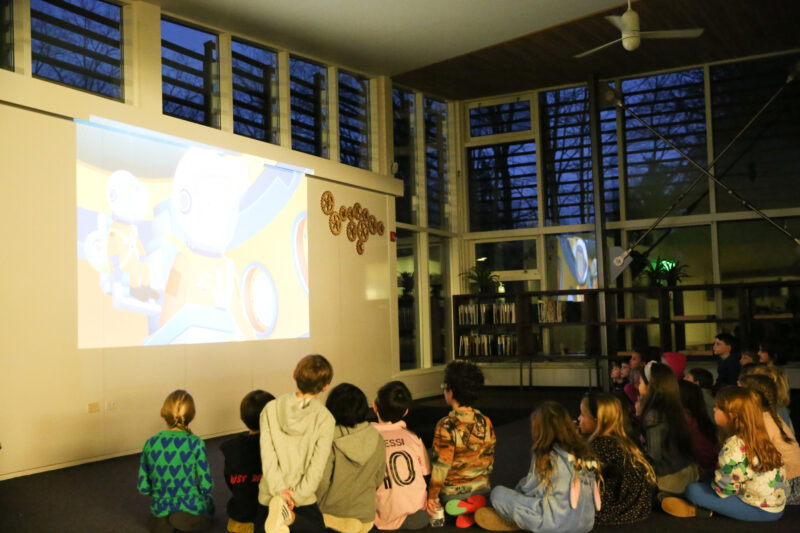“Okay, Bus, do your stuff!” The Graders settled in with tubs of popcorn on our Movie Night to watch the shape-shifting Magic School Bus blast off to the International Space Station. This caper in space was led by Ms. Fiona Frizzle, an ebullient fifth-grade science teacher who, it turns out, is also a former astronaut. She’s fluent in “Runglish,” the mix of Russian and English spoken on the ISS, and teaches her students the laws of physics behind moving around in microgravity. Real-life astronaut Chris Hadfield appears as an instructor at NASA’s Astronaut Training Center, and the plot thickens when a giant mutant tardigrade named Pinky escapes the ISS lab and wreaks havoc in a quest for water. It was a gripping space adventure that revealed along the way how meals, naps, spacewalks, dirty laundry, accidental spills and shampooing one’s hair are managed on the ISS.
The Magic School Bus began in 1987 as an innovative series of books by children’s author Joanna Coles, who brought well-researched scientific material to life by weaving in drama and humor. Illustrator Bruce Degan added endearing details like the eccentric themed outfits that Ms. Frizzle wears, with accessories like Saturn earrings and soda-bottle shoes. Ms. Frizzle’s class was also multiracial, something of a first. “When we started the Magic School Bus,” Coles said in an interview, “there was not much diversity shown in children’s books. We wanted to represent children in the real world.” Ms. Frizzle and her fantastical field trips captivated readers, and there are more than 90 million copies in print worldwide. “Teachers have told me they avoided teaching science before the Magic School Bus, and that it made science accessible to both teachers and children,” Coles shared. “Young people have also told me that they became scientists due to the influence of the Magic School Bus. That is a legacy that I’m very proud of.”
Joanna Coles continued to write new expeditions, with the most recent, in 2021, being The Magic School Bus Explores Evolution. It’s her favorite of all her books and easily the most daunting field trip in the series, with the children on the Magic Bus watching life evolve on Earth over 3.5 billion years. Illustrator Bruce Degan shared, “I tried to show every era, year and life form, but it was too complicated. So it has ended up as a nice, open spiral, with a few representations of each era.” Following that spiral from single cells to dinosaurs to modern humans is a fantastic read, and we recommend seeking this book out—and the 11 titles that precede it—at the library.
The books were adapted into an animated series for PBS in the 1990s, with a catchy theme song by Little Richard and Lily Tomlin voicing Ms. Frizzle (she won an Emmy for the role). One of many famous guests was Dolly Parton, who voiced Ms. Frizzles’ cousin, Murph, the owner of a recycling plant. The Magic School Bus became the longest-running science series on television, on the air for 18 consecutive years. Those much-beloved episodes are still available to watch on YouTube.
In 2017, Netflix launched a reboot of the series, The Magic School Bus Rides Again, starring Kate McKinnon as Ms. Frizzle’s younger sister, Fiona Frizzle, and with a jaunty new theme song by Lin-Manuel Miranda. The Magic Bus has been modernized, and the technology has been brought up to date with smartphones, selfies, augmented reality, tablets, robots, miniature submarines and wearable tech. But the spirit of scientific adventure continues, with the Magic Bus exploring glaciers, underwater ecosystems in Hawaii, the continent of Pangea, the arrangements of atoms and the human immune system. Ms. Frizzle’s cheerful enthusiasm for scientific facts—and how she lets her students take risks, make mistakes and learn through experience—is the heart and enchantment of the show. Each wild scenario with her in charge makes for a great family movie night.
Happy reading and watching,
Maureen
